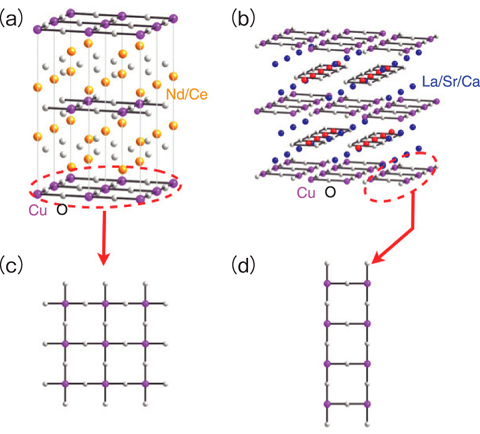
Fig.4-17 Crystal structure of two representative copper oxides and their relevant Cu-O components
Fig.4-18 Resonant inelastic x-ray scattering spectra of La5Sr9Cu24O41 [(e), (f)], Sr14Cu24O41 [ (g), (h)], Sr2.5Ca11.5Cu24O41 [(i), (j)]
One of the important roles of materials science is to understand electronic properties of a material from the investigation of its electronic structure, that is, energy and momentum of the electrons. For this purpose, the photon is a good probe because it is mainly scattered by the charge of the electron. Brilliant x-rays from a large synchrotron radiation facility such as SPring-8 now enable us to measure electronic excitations by so-called inelastic x-ray scattering (IXS). A great advantage of IXS over conventional optical methods is momentum resolution. Furthermore, resonant inelastic x-ray scattering (RIXS), where the incident photon energy is tuned to the electron level of a specific element, has an additional merit of element selectivity.
A main target of our research is strongly correlated copper oxides such as high-Tc superconductors. Fig.4-17(a) shows a representative superconducting copper oxide, Nd2-xCexCuO4 , and the playground of the superconductivity is the two-dimensional square lattice shown in Fig.4-17(c). We have reported on Nd2-xCexCuO4 two years ago. Here we present a RIXS study of another copper oxide system, (La,Sr,Ca)14Cu24O41, whose crystal structure is shown in Fig.4-17(b). The relevant component of the system is the two-leg ladder in Fig.4-17(d). Superconductivity was also found in the system under high-pressure and it is considered to belong to the second class of superconducting copper oxides which has a different structural component.
Fig.4-18 shows RIXS spectra of three concentrations of (La,Sr,Ca)14Cu24O41. The carrier number increases from the top to bottom graphs. The dispersive feature at 2-4 eV is an excitation between the Cu 3d orbital split by the strong Coulomb repulsion and the O 2p orbital. Energy-momentum dependence of the excitation is almost independent of the carrier number, which is a characteristic of the two-leg ladder. In contrast, it is dependent on the carrier number in the square lattice. The continuum excitation at 1-1.5 eV is related to the dynamics of the mobile carriers in the ladder and its intensity is proportional to the carrier number in the ladder.
These detailed studies give fundamental information of the electronic structure which is necessary to construct a model of the superconductivity.
In both the square lattice and two-leg ladder, a charge ordered state where mobile carriers stop their motion and align periodically was found at some concentrations. Whether the charge order is cooperative or competitive with superconductivity is an important issue. The next aim of our RIXS studies is to detect the electron dynamics in the charge ordered state.